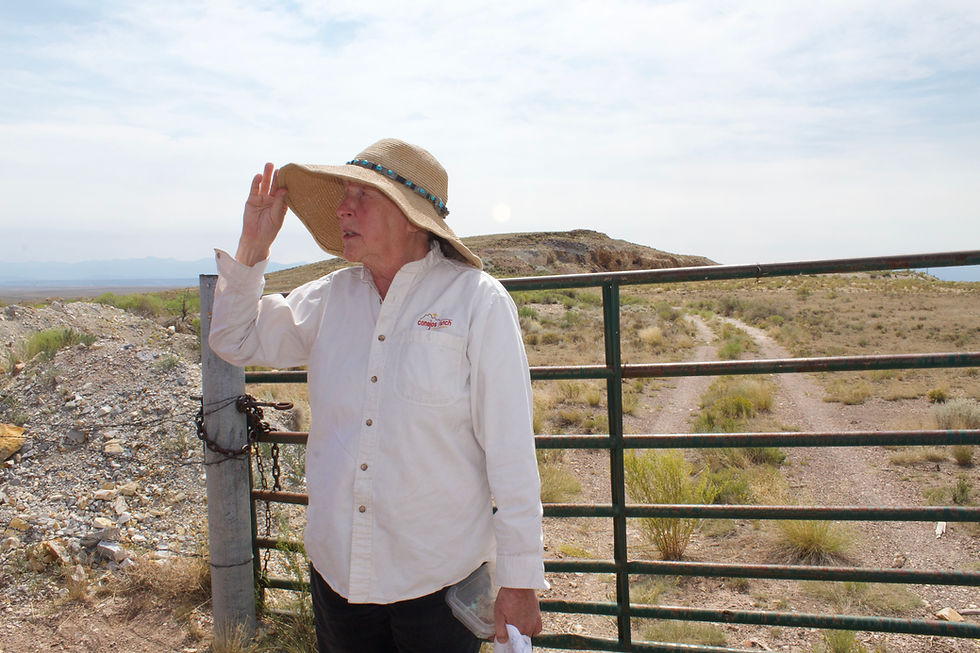Importance of Creating a National Conservation Area in Conejos County
- Isabel Lisle
- May 17, 2024
- 3 min read
Updated: Dec 13, 2024
By: Diane Drekma

Contributed by Anna Vargas
Date: May 17, 2024
There was a public meeting April 16 at the Parish Hall in Conejos, with 60 people attending, to hear expertise from panelists about water rights, and management of the Rio Grande corridor, the Rio Grande Natural Area, and how that might work in tandem with the possibility of having a National Conservation Area (NCA) designation on adjacent Bureau of Land Management (BLM) lands.
The evening presentation was initiated by Anna Vargas, Project Manager and Chris Canaly, Director of San Luis Valley Ecosystem Council (SLVEC). This was the fourth meeting since June 2023 to address benefits and concerns. Vargas brought together various water panelists to share different perspectives and engage in discussion with the community. The panelists were David Robbins, Attorney representing the Rio Grande Water Conservation District, Nathan Coombs, Manager of the Conejos Water Conservancy District, Craig Cotton and Pat McDermott, representing the State Division 3 Water Office. Canaly explained the reason for considering a National Conservation Area (NCA), as opposed to having a National Monument. “An NCA requires a bill to be passed through Congress... Local people have a lot of input. The bill can state that Colorado water law manages river flow, and that the Rio Grande compact from 1938 remains in the hands of the state engineer’s office. Traditional uses like grazing will continue, Permittees will retain their allotments.”
The NCA would be managed by the Bureau of Land Management (BLM) which is currently understaffed and having difficulty maintaining the lands they already have. “A National Conservation Area would open the doors for federal funding and other grant opportunities, which would provide moneys for new staff, mitigate current challenges, like building stock tanks to prevent feral horses and cattle from destroying the riparian habitat, along the Rio Grande, and provide a safeguard to cultural and natural areas that are not currently conserved.” Canaly added.
A National Monument designation is created through a presidential proclamation, and does not necessarily encompass the same level of local input and rigor that a National Conservation Area provides. There has been a petition circulating in Conejos County opposing the National Conservation Area (NCA). Unfortunately, there may be confusion regarding this current NCA conversation, as opposed to the Rio Grande/Del Norte Monument expansion conversation from 2016.
The current discussion is focused on a potential bill that could be introduced by the congressional delegation. Canaly cited other communities in Colorado that have benefitted from a designated National Conservation Area. (Browns Canyon, Dominguez-Escalante, Gunnison Gorge, and McInnis Canyons) SLVEC will continue to bring the public together to discuss possibilities and concerns. “Exploring a National Conservation Area (NCA) designation is a management tool that can serve to preserve and protect the landscape and cultural history of Conejos County. It can be tailor made to fit community needs.” Canaly emphasized.
SLVEC is motivated to continue this NCA designation discussion. Win/win partnerships were emphasized by the panelists, who also made clear that they were there to provide information and would remain neutral in terms of advocating for designation. Examples were given from other public/private partnerships that benefitted water users and local communities, like the Great Sand Dunes National Park and managing water in Platoro Reservoir, with Colorado, Parks and Wildlife (CPW) and BLM. Vargas offered “This designation could provide economic opportunities for Conejos County, protect traditional uses, and expand cultural awareness and education that future generations can explore and benefit from. This is an extraordinary area that has a living history which goes back 13,000 years to present day life.”
“I feel very strongly that working cooperatively as a community and treating federal agencies as part of that community as well as state agencies is critical to the long term stability of any basin in the state or any community in the state. We are blessed in the San Luis Valley that we have federal agencies willing to cooperate with local citizens and with local water users in trying to fashion win-win situations,” stated Attorney David Robbins.
Nathan Coombs, Conejos Conservancy District Manager talked about the goals of the Conejos Conservancy District, the Rio Grande Compact, and managing land and water in a comprehensive manner. “Our number one priority for the Conejos Conservancy District is protecting our ability to manage the Rio Grande Compact as a state. You’re never doing the wrong thing to know who your partners are.”
In the San Luis Valley, water is our most precious natural resource and essential for the continuation of our way of life. Protection of riparian areas are extremely important for healthy watersheds, which when functioning well, provide food and fiber, clean water, and habitat for plants and animals. Water is life.
The presentation was documented and is now available on the SLVEC website.







Comments